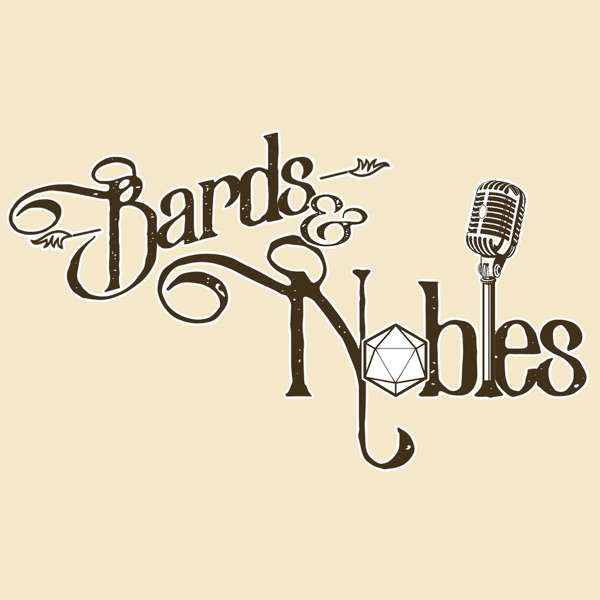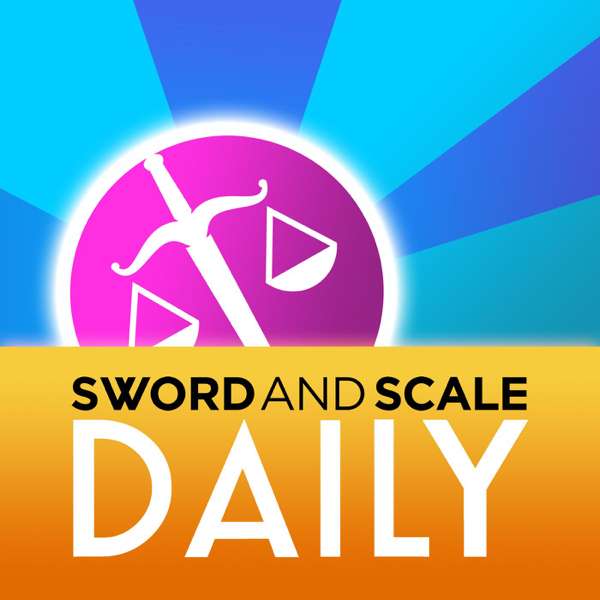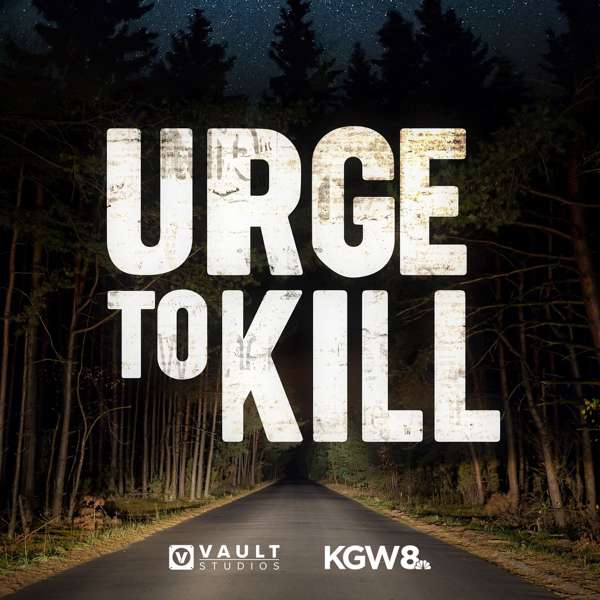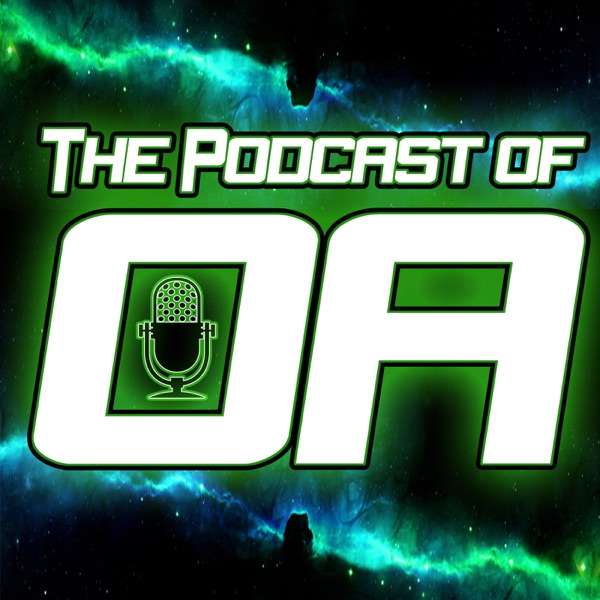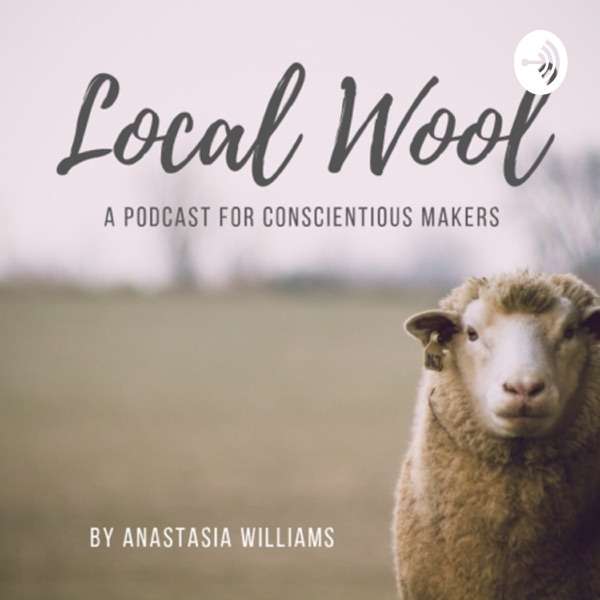Hello there and welcome to The Crochet Circle Podcast and the show notes for Episode 39 – Call me Crozelda
In this episode, I cover: Inclusivity in the fibre community; Old Dog New Tricks; CAL Updates; Final Destination; En Route; Feeding the habit; Quick News Beats and J’adore?
This podcast is sponsored by my online crafting company, Provenance Craft Co.
Thanks to everyone who tunes into the podcast whether it is through Stitcher, Podbean, Spotify, iTunes or the YouTube Channel. Your support and engagement are really appreciated and makes running a podcast very special and worthwhile.
If you would like to support the podcast, you can do that through Patreon:
1 – Inclusivity in the fibre community and beyond
Given the importance of this topic, I felt that it needed to be the first thing I covered. I don’t usually script exactly what I say, but because of the importance of inclusivity within the fibre community, I don’t want to ramble or use the wrong wording because of the pressure of recording and trying to get my thoughts across.
I am fairly sure that everyone listening and watching this podcast is aware of the conversations that have been ongoing for much of January. The discussions are on inclusivity and diversity in the fibre community and beyond. These are conversations that are long overdue and conversations that need to become actions.
This podcast at its very heart is about welcoming everyone with one exception. If you are watching or listening to this and have even a hint of an eye roll or a “uh, this again, just talk about crochet”, then this is not the podcast for you.
Now, if you are the kind of human that likes to support your fellow humans, to build them up, rather than knock them down, to offer them the handshake of crafting kindness, and to take that handshake beyond the crafting community to every aspect of your life, then come on in, stay awhile. I hope you feel the welcome embrace and love of the Crochet Clan.
I would like to specify what I mean by inclusivity. For me and this podcast, that means creating an inclusive space for Black and Indigenous and/or People of Colour (BI/PoC), for people with differing abilities, for people within the LGBTQ community (Lesbian, Gay, Bisexual, Transgender and Queer) for people of all sizes for people that identify as binary or non-binary. An inclusive space where racism and discrimination of your fellow humans cannot and will not be tolerated.
I spoke about the need for actions as well as conversations. So, what I would like to do is take you through the changes that I am making to the podcast to make it an even more inclusive space:
Logos – I am in going to change the logo for the podcast and have one created for the Global Hook Ups. It struck me that the current logo does absolutely nothing to say “everyone is welcome here”. So, in true Crochet Clan spirit, I looked within to see who was part of our community that I could ask to take on logo commissions. I am really chuffed to say that Claudia from the Crochet Lune podcast is going to work up the new logos. If she comes up with different design options. Then my plan is to throw it out to you to see which logos speak most clearly to you of inclusivity.
Recognition of makers/dyers – my plan is to seek permission from makers and dyers to show a picture of them within the video podcast and show notes. Websites and Instagram handles don’t necessarily show the diversity within our community. I also know that when I have seen somebody’s face, it creates more of a connection with that dyer/maker and somehow cements them in my mind. I am also keen to do this from a business perspective because to me, seeing the face behind a small indie business is a very good way for me to support them over big multi-national companies. Let me be clear, that this is not about tokenism. No matter who you are, if I am showing your product or yarn on the podcast and you’re are a small indie maker or dyer, I will be asking to show a photo of you in the video podcast and show notes. You have every right to decline and a photo will only appear if I have your permission.
Increasing diversity in my Instagram feed – I thought that my feed was already pretty diverse. I have a general policy of following people back unless their account is set to private. So, I am not an account that has thousands of followers (I don’t anyway) and only follows a handful back. That means that my account is full of lots of lovely diverse folk.
However, it wasn’t until I started following #blackcrocheter #blackcrocheters #blackcraftersofinstagram #diversknitty #spooniecrafts #lgbtqcrafts #lgbtcrafts #that my feed really became diverse. I encourage you all to do that same. Following hashtags is a great way of finding new people on Instagram, introducing yourself and making new connections. If you have suggestions for any other hashtags to follow, please let me know.
Highlighting under-represented groups – Back in November 2018 , Jeanette Sloan was asking the fibre community to point her towards BIPoC designers. She has done a lot of time consuming work to pull together a list from the details she was given. A similar piece of work is being done by Marceline from the Hey BrownBerry Podcast and she has highlighted BIPoC dyers and yarn makers.
Claudia from Crochet Luna podcast has been beavering away pulling together a list of BIPoC crochet designers. She is going through the painstaking work of communicating with the designers to ask whether they are happy to be featured. I am hoping to help Claudia to pull this list together in whatever way I can. The list of BIPoC crochet designers is going to be on my blog over at KNIT IT – HOOK IT – CRAFT IT – because Claudia has asked me to host it there.
My hope is that in time, this will also feature dyers and makers from other under-represented groups. However, this needs to be looked at in a sensitive manner and only undertaken with the backing and permission of the people within these underrepresented groups.
If you would like to be added to the work that Claudia and I are doing, then I would be really interested in having a discussion with you about what the parameters should be.
Creating a more accessible podcast and Instagram accounts – I have had some very helpful and interesting Instagram discussions with Sarah from @SarahDawnDesigns. She has been brilliant at pointing me towards ways that I can make changes to the podcast to make it more accessible for people with hearing or visual impairments.
If you have a hearing impairment, I always try to face the camera and not show things in front of my face, in the hope that people are able to read my lips. I always create show notes and link to them from the dropdown box on YouTube. If you are watching the video, the section place markers correlate to the different sections in the show notes which can always be found at www.thecrochetcircle.podbean.com and I believe are in a suitable format as a text transcript.
If you have a visual impairment, I try to be very descriptive with textures and colours. Again, I believe that the show notes are in a format that is suitable for assistive technology. In addition to the written part of the show notes, I will start adding descriptions to each photo and the caption will start with Photo: I have also started using ALT text within my Instagram feed. I have gone back through the posts from the last month and added ALT text to those posts, but from now on, anything I post on @crochet_circle_podcast, @knitithookit or @faydhdesigns, will have ALT text attached to each of the images.
The final thing I would like to add is that twice a month there is the Global Hook up. I run it on a Saturday night and then again on the Sunday morning (both GMT/BST) so that the crafting session is available to different time zones. Everyone is welcome in the Global Hook Ups.
If you just want to check out what happens, you can join the crafting session and put something over your camera. You also have the option to mute your microphone. It’s really up to you how much you join in, which hopefully makes it a great crafting space for people that may be nervous about joining in. For some people, they started out by just sitting and listening and moved onto joining the conversations in the next session. It’s free to join, you just need a decent wifi connection.
2 – Old Dog New Tricks
It feels like many people are working on crocheted garments, or plan to in 2019. One of the factors that you may come across is wording like “increase/decrease by 12 stitches evenly across round/row”. In my opinion, this is a little unfair of a designer to leave it at that. It isn’t hard to work out how you increase or decrease stitches, but if you haven’t done it before, then you should be getting more guidance within the pattern.
I am going to use one of my en route projects as an example. I have deliberately stopped this project where it is so that I can show you how I am going to tackle the bust decreases that I want to add in. This isn’t a feature of this pattern, it is one that I am adding in to give some shaping to the finished piece. That said when the pattern did call for increases it didn’t give the calculations required…
I would like to think that if I ever design a garment for crochet or knitting, this is the kind of detail that I would add.
If you want to see this in video form, take a look at this video from Very Pink Knits – she is one of my favourites for giving simple hint and tips video tutorials.
Rather than using Very Pink Knits numbers, I want to use my jumper as the example piece. I have crocheted down to just below the bust area and now I want to decrease the overall number of stitches to pull the jumper inn and give some definition.
I have 269 stitches which gives me a circumference of 116cm. I want to get down to a circumference of 104cm for under the bust so need to do an initial calculation:
269 stitches/116cm means that I have approximately 2.32 stitches per cm.
I want the circumference to be 105cm, so I need 244 stitches (105cm x 2.32 stitches). My pattern requires an odd number of stitches, so I am actually going to decrease down to 243 stitches (because I rounded up to 244 in the first place).
Overall, I need to reduce my number of round stitches by 26 from 269 to 243.
So, my next calculation is to work out how I can decrease 26 stitches evenly across my round.
I start with my existing total stitch count (269) and divide it by the number that I need to decrease by (26):
269/26 = 10.35
Again, I am going to round that number down so that I will use 10 as my answer. Had the answer been 10.5, I would have rounded up to 11.
So, next I need to multiply the number of stitches to be decreased (26) by the number of decreases (10):
26 x 10 = 260 which leaves a remainder of 9 stitches
Because I would be decreasing two stitches together, those two stitches have to be factored in as part of the two stitch decrease every 10 stitches. This means that I will crochet 8 stitches and decrease over the last 2 stitches – giving one decrease over every 10 stitches. The remaining 9 stitches are simply crocheted at the end.
You may find it easier to attach a stitch marker at the beginning of every decrease section. This can help to make sure that you got your maths right and keep you on the straight and narrow when you are counting and decreasing.
PHOTO: Esja Jumper (crocheted) in pale blue (main colour) and pale blue
variegarted with rust and teal as a contrast. Around the bottom of the jumper,
each decrease section has been marked with a black bulb pin.
Now, life isn’t that easy for me because my Esja sweater is in linen stitch which is a two stitch pattern repeat of 1dc and 1ch. That makes the calculation a little more difficult.
But here is how I have done it:
269 stitches need to be reduced by 26 down to 243 stitches.
To create an even decrease across the fabric without getting holes in the decrease area, I want to decrease in the following way:
Hook through first ch-sp, yrh, pull up a loop, hook through next ch-sp, yrh, pull up a loop, yrh, pull through all three loops. This action adds a bit more yarn bulk to the area and makes the decrease look less obvious. In doing so, you are using three stitches to decrease down to one.
So, I started looking for the number of stitches required per decrease section, remembering that each decrease will reduce the round by two stitches, not one.
So, here is where I started:
269 stitches / by 18 stitches gives 15 decrease sections and when you multiply that by the actual number of stitches per decrease section after the decrease has been made, 16, then you would be left with approximately 240 stitches with a remainder of 3 stitches which would simply be worked at the end of the round. You are basically looking for the division that will give you the least number of remainder stitches.
Here is how a linen stitch decrease will work for me over 18 sts:
Ch1, hook through first ch-sp, yrh, pull up a loop, hook through next ch-sp, yrh, pull up a loop, yrh, pull through all three loops, *ch1, skip 1 st, 1dc in next ch-sp; rep from * six (6) more times. (16 sts)
I would repeat the sequence 14 more times and finish off with ch1, skip 1 st, 1dc in next ch-sp ch1 as the stitch sequence for the remaining three stitches.
Clear as mud?
After the podcast, I will attempt to add some progress photos so that you can see how I have marked the shawl out every 18 stitches and worked the first decrease section.
3 – CAL Updates
The #ChristmasEveCAL is done and dusted! Once again, I had very little time to respond to the hashtags on IG. I want to be able to, but life is crammed. I am making some huge steps with the businesses this year and a lot of my time energy has to be on that.
So, I’m going to take a little break from running CALs – mainly because I know I won’t have the time and I won’t be doing you the justice you deserve. Things may shift by the end of the year, but for now I will try to concentrate on promoting the CALs that my fellow crafters and podcasters are running.
4 – Final Destination
I only have one proper finished object, because I don’t think I can legitimately show 1.5 socks as an FO!
Last year I started a bag and my intention was to add to every January with my ‘Word of the Year’. When I have previously seen people talk about their word of the year, I have dismissed it as a load of old tosh! Having lived with ‘Clarity’ as my 2018 word, I can now say that it definitely gave me grounding point throughout the year and gave me a flag to keep on coming back to.
Clarity was meant as a word for me to stick to my core goals and not stray. To keep on the path that I had set for the year. Given that it was so helpful for 2018, I have now added ‘STRUCTURE’ to me bag as my word for 2019.
This is the year when I hope to move KNIT IT – HOOK IT - CRAFT IT and Fay Dashper-Hughes Designs up a few notches and to do that I need to put more structure in place.
So now, I think about clarity and how I can structure my work flow to achieve what I want to achieve in 2019 and beyond.
Here’s what my bag looks like now. Every year I will add to it in a Scrabble format.
PHOTO: Ecru coloured linen bag with dark grey ribbon tie lying on a dark grey surface.The word CLARITY has been embroidered across the bag horizontally and STRUCTURE, embroidered vertically as if a game os Scrabble has just been started. Three bows of linen are at the base of the bag, in a dark grey, light fawn/grey and dark mustard
.
The bag was made from Scottish linen that I use in some of my products. I thin just draw around a wooden Scrabble tile to get the right size for each letter. Using a 3 ply linen thread from Namolio https://www.etsy.com/uk/listing/237661664/linen-yarn-thread-25-grams-3-ply?ref=shop_home_active_1
5 – En Route
I have finished one of my Fallen Leaves socks and am ready to turn the heel on the other. I will show them off properly in the next podcast…
Pattern: https://www.ravelry.com/patterns/library/fallen-leaves-socks
My Esja jumper (to be made with yarn dyed by my friend Bec of Black Horse Yarns and Socks Yeah! in the colour 'Chryso'. This has been really quick to crochet up so far and I only stopped to be able to use the jumper as an example in this month’s Old Dog New Tricks.
Pattern: https://www.ravelry.com/patterns/library/esja-sweater
Main Colour Yarn: https://coopknits.bigcartel.com/product/coop-knits-socks-yeah-yarn
Contrast Yarn: https://www.instagram.com/blackhorseyarn/
PHOTO: Esja jumper (crocheted) as a close up to show the slight distinction in colours made between the main colour (light blue) and contrast colour (light blue with rust and teal). The contrast between the two yarns in the brioche section is very subtle.
I am also working on another Doppio Colosseum shawl. Originally, I used a yarn that Helen from The Wool Kitchen no longer dyes and she kindly gave me two skeins of yarn to make a new sample with. The yarn is 4ply (light fingering weight), 50% Merino and 50% silk and it is beautiful to work with. The sheen and drape are just incredible. By the time I podcast again, I hope to have this finished so that Helen can use it on her stand at her next two festivals (Unravel and Edinburgh Yarn Festival). It’s great to see another yarn dyer that wants to fly the crochet flag.
Pattern: https://www.ravelry.com/patterns/library/doppio-colosseum
Yarn: https://www.thewoolkitchen.com/collections/4ply-merino-silk/products/worn-denim-merino-silk-4ply
PHOTO: Dark back background, flat lay of a started crocheted shawl in linen stitch. To the left is a skein of Worn Denim by The Wool Kitchen (light blue/grey with blotches of dark denim blue), to the right is a cake of the same yarn and below is the curled beginnings of a Doppio Colosseum shawl.
6 – Feeding the habit
I truly believed that I was going to severely restrict the amount of yarn that I was going to buy in 2019. The difficulty comes when I enter yarn shops. I want to be able to support Bricks and Mortar shops by purchasing from them and highlighting them on the podcast.
So, this month I have been a bit naughty. I went over to visit the Laxton’s spinning mill in West Yorkshire and on the way back, I ‘popped’ in to see the good folk at Black Sheep Wools. It’s probably my most local yarn shop (about 45 minutes away) and I always like having a good natter with Sara and the others.
When I was there, I picked up some of the ‘Pip Colourworks’ from Baa Ram Ewe. I had a little mini skein of this given to me as a test skein and couldn’t really do it justice with 10g. I have since knitted another Curlew hat with it and plan on hooking something up with it too, so that I can do a proper yarn review on it for the podcast.
PHOTO: Dark background with a blurred foreground of a dark dusky rose ball of yarn. At the back from left to right is the same Pip Colourwork yarn from Baa Ram Ewe, but in a light green, dark forest green, grey sky blue and mustard. Just fo camera to the right is the brim of a knitted Curlew hat in the same colours.
PHOTO: Dark grey background with a close up of Reggia Nautic Color sock yarn. Self striping in a white and mid blue. The ball band is yellow and shows a white sock with thin blue stripes.
I also came across and had to buy the latest Regia sock yarn called Nautic Colour, which creates sailor striped socks. I am an absolute sucker for sailor striped anything!
Local Yarn Shop: https://www.blacksheepwools.com/knitting-yarn/baa-ram-ewe-pip-colourwork.html
Yarn – Pip Colourwork: https://baaramewe.co.uk/products/pipcolourwork?variant=1440591249416
Yarn – Regia: https://www.blacksheepwools.com/knitting-yarn/regia-nautic-color.html
Later that week, I snuck up to Lancaster to see Kate from Northern Yarn in her new shop location in the city centre. It’s a really beautiful shop that is easy to get to. Kate works really hard at developing both the shop and her relationships with local shepherds and shepherdesses. She only sells British yarns and many of them are local. That is definitely something worth supporting in my opinion.
PHOTO: Five balls of wool all in a horizontal row on a dark background and each with a cream "Jamiesons Shetland Spindrift" ball band. The colours from left to right are: a vibrant mid green, rusty red, rusty orange, bright rusty mustard and a bright mid blue.
Whilst there, I picked up some Jamiesons Sheltand Spindrift 2 ply to make into a hat from this book that I also got.
Local Yarn Shop: https://www.northernyarn.co.uk/jamiesons-of-shetland
Yarn: https://www.jamiesonsofshetland.co.uk/spindrift-1-c.asp
Book: https://www.shopkdd.com/books/milarrochy-heids
Hmm, it doesn’t stop there. Last week, I hopped on the train a went to Llandudno on the North Wales Coast. Nikki runs Ewe Felty Thing, a yarn shop just a few minutes away from the train station. It has the most impressive wall of indie dyed yarn from 16 different dyers.
PHOTO: Dark grey background showing top right, a skein of yarn from Abercairn. It's a skinny single plyed yarn in a blend of merino and silk and has a beautiful sheen. The variegated skein has pinks, purples, teals, greens and blues in it - just like the Grampian mountains. Underneath the skein are two mini skeins, one in a deep dusky pink and one in a bright aubergine purple. In the bottom corner, there is a bit of a purple/pink mohair skein.
Of course, I came home with yarn. Of course one of them was mohair! I bought a new to me indie dyer called Abercairn Yarns.
Local Yarn Shop: https://ewefeltything.co.uk/
Yarns: https://ewefeltything.co.uk/product-category/handdyedyarns/yarns-by-dyer/abercairn-yarns/4ply-fingering/page/2/
https://www.instagram.com/abercairn_yarns/?hl=en
I was also vending at Waltham Abbey Wool Show this month, and it was a great show! My bestie, Jenny turned up as a surprise in the afternoon and helped on the stand. As a thank you, she got to pick which yarn she liked best from Dragon Hill Studios. Andrew and Sharon run the company and I really love the way they cake up their yarn. I have been meaning to buy some of their yarn for a while and Waltham Abbey was the ideal time. I have a deal going with Jenny that if I am making socks with a yarn she likes, she can have a pair too. I can get two pairs of knitted socks out of a 100g skein of 4 ply (light fingering weight) yarn with contrast toes, heels and cuffs.
PHOTO: Dark background with a cake of yarn and a white circular tag from Dragon Hill Studios with a paired back green curled up a dragon for a logo. The yarn is dark grey with bright pink stripes and they cleverly cake up the yarn, wrapping the last few lengths over the top and bottom of the cake to show off the ratio of self-striping colours which is more dark grey and a pop of pink.
Yarn show: http://www.walthamabbeywoolshow.co.uk/
Yarn: https://www.dragonhillstudio.co.uk/
7 - Quick News Beats
1 - Global Hook Ups – I have had to change the date of the February hook up:
February – 16th Saturday (night) and 17th (morning) GMT
The other dates for the first half of 2019 are in the Ravelry thread.
2 – I am now heading to Edinburgh for all four days of the festival. I will be in the show on Thursday working on a stand (more on that to come), and back at the show for the Saturday and Sunday. This wasn’t what was planned, but it’s now happening!
Edinburgh Yarn Festival: http://www.edinyarnfest.com/
3 – I have also booked to go to Woolinn Festival, just outside of Dublin in June. I am landing at the airport on the Saturday morning and leave on the Sunday night. So, if you are coming over and fancy a meetup either at the festival or on the Saturday night in Dublin city centre – let me know!
Woolinn Festival: http://woollinn.com/
4 – Sean, you can never have too many shawls!
8 - J’adore
I am loving that January has really felt like a new start. I have reset the button, good changes have been made and 2019 is looking like a good one.
I am also off to Barcelona shortly with Matthewkins. We really need some time out and I am looking forward to soaking up some Spanish atmosphere and being inspired by the gothic architecture.
I will be back on Friday the 1st March!
Fay x
Instagram: Crochet_Circle_Podcast
Instagram: provenance.craft.co
Instagram: FayDHDesigns
YouTube: The Crochet Circle Podcast
Crochet Clan on Mighty Network: Invite

 Our TOPPODCAST Picks
Our TOPPODCAST Picks  Stay Connected
Stay Connected



